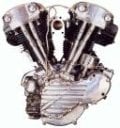geo: You're quick. In fact, MIT Lisp Machine Lisp does have a microcode compiler, that can compile lisp functions to microcode, where the hope is that they will run faster. Problems: microstore is very expensive, think L1 instruction cache, except in a dedicated memory that can't be reused. So there typically isn't much space there (MIT CADR was unusual in that it had a huge microstore, something like 16Kwords IIRC). Also, microcode is where traps (exceptions) are handled, so any function compiled to microcode cannot trap. This is a particular problem in a lisp machine, because in addition to things like page faults, memory references trap in many ways (type tags and invisible forwarding pointers). It must also be very careful about subroutine calls, because since the microstore is inside the CPU, any call stack is a dedicated CPU resource with a fixed depth. If microcode calls nest too deeply the machine crashes. So much for dynamic programming...
With the 3600, Symbolics moved hundreds of low-level functions out of microcode, into regular macrocode, where they ran faster, for all the above reasons. I don't think a microcode compiler was written for the 3600, but of course there was a Lisp-syntax macro assembler that made writing the microcode simpler. A single line of microcode could pop arguments from the stack, check their tags, perform an arithmetic or logical operation, shift the result, check overflow, store or push it into various places, mark flags, and return—anything that the hardware can do in parallel in one cycle.
Writable microcode (WCS - writable control store) was a feature of some minicomputers in the '70s and '80s. MIT CONS/CADR, Symbolics 3600, Three Rivers PERQ, and a number of DEC machines including the KL10, VAX 11/780, 8800, and even IBM S/370.
http://en.wikipedia.org/wiki/Control_store
While an architecture is young it can be valuable to fix problems in the field. At the end of the '80s the WCS fell out of style. (Today a whole machine can be compiled to FPGA, so there is an opportunity for patches even without microcode.)


 (Sakura)
(Sakura)
 (Sasuke)
(Sasuke)
 (Naruto) ... lil Jesse! (O2 laptop)
(Naruto) ... lil Jesse! (O2 laptop)






 btw how about #3, is it not possible to design a processor that reads and understand Lisp syntax without compiling it to a lower level? i think tihs would be cool right? it just like a computer talking to our language, not us talking to them hehe
btw how about #3, is it not possible to design a processor that reads and understand Lisp syntax without compiling it to a lower level? i think tihs would be cool right? it just like a computer talking to our language, not us talking to them hehe











